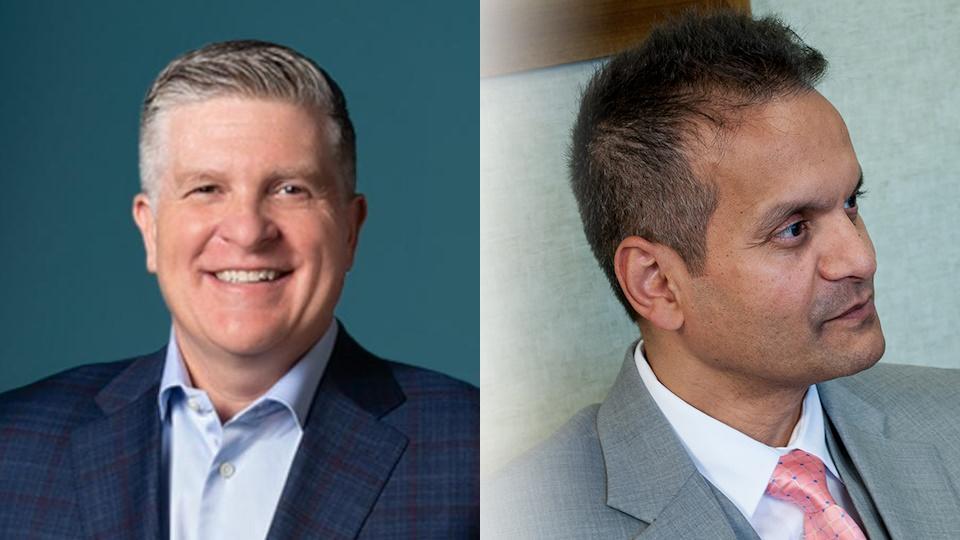Novavax: Creating tomorrow’s vaccines today

Back in November 2023, pharmaphorum travelled to Uppsala, Sweden, for a Novavax press conference, the company celebrating a decade of doing what it does best: vaccines. From COVID-19 to malaria, Novavax focuses solely on developing vaccines against some of the world’s most serious infectious threats. What sets it apart, though, is that its vaccines are protein-based.
Founded in 1987 in the US, Gale Smith – VP of vaccine development at Novavax – invented the technique of using insect cells for producing recombinant protein vaccines. A further milestone came in 1998 in Uppsala, with the development of adjuvants for veterinary use and for humans after that. By 2013, European Novavax AB was acquired by the US Novavax Inc, combining the two techniques of recombinant proteins and S-based adjuvants, Magnus Savenhed, managing director of Novavax AB, told journalists.
Creating immunological memory without causing disease
Before a tour of the facility, Dirk Poelaert, MD and senior director of medical affairs in Europe for Novavax, who has worked in vaccines for 20 years or so, explained that protein-based vaccines work, very simply, by protecting humans by triggering the immune system to produce antibodies against a specific pathogen, making a person sick and mimicking nature by providing an antigen. “In short, vaccines create immunological memory without causing disease,” he said.
Nonetheless, recombinant protein vaccines often need an adjuvant, or a substance that increases or modulates the immune response to a vaccine. This is why the Novavax vaccine platform comprises a recombinant protein particle plus Matrix-M adjuvant, which is manufactured in Uppsala itself.
Poelaert described how a recombinant protein particle has a native 3-dimensional conformation, with truncated S. frugiperda glycans and a particulate structure that facilitates antigen presentation and processing. Meanwhile, the Matrix-M adjuvant induces robust neutralising antibodies and induces polyfunctional CD4+TH1 lymphocytes (T helper cells). Formulation is in a nanoparticle with the recombinant protein particle.
Protein-based vaccines and recombinant expression systems
What might not be realised is that protein-based vaccines have existed for many decades for the prophylaxis of bacterial and viral diseases. They are indicated across the spectrum of infants, children, and adults, and have a favourable safety profile with well-known benefits. Nevertheless, originally the proteins used in vaccines were purified exclusively from cultures of an infectious agent, while today, specific immunogenic proteins can be generated through recombinant expression systems, said Poelaert.
Novavax takes the RNA sequence that codes and then incorporates into a baculovirus that can only infect insects, not humans. It uses the Sf9 cell, an ovary cell of an army moth, and the baculovirus enters the insect cell, including its nucleus, wherein it releases its genetic material. The machinery of this cell will produce the original protein had in mind, which then rises to the surface of the cell, where it is harvested and put into contact with the core, the polysorbate 80, the emulsifiers, and go towards a full vaccine.
Global public health: The malaria case
In terms of the global context, also in attendance was Dr Ole Olesen, PhD, executive director of the European Vaccine Initiative (EVI). EVI is an independent, non-profit research organisation that supports the development of safe and effective vaccines for global health – including affordability. It supports vaccine R&D through pre-clinical and clinical development, having helped with over 40 vaccine formulations. Dr Olesen noted how infectious diseases are often forgotten in the Western world.
“However, in the poorer parts of the world, infectious diseases are still a huge problem,” he reminded journalists. “More than 10 million people each year die from such. If one looks specifically at the malaria example, there are almost 250 million cases per year […] As a global community, this needs to be addressed.” Indeed, in 2022, there were 608,000 deaths from malaria across 85 countries worldwide.
As of December 2023, though, Novavax’s R21/Matrix-M malaria vaccine received pre-qualification from the World Health Organization (WHO), to prevent malarial disease in children caused by the P. falciparum parasite in endemic areas, allowing United Nations (UN) agencies to procure the vaccine in eligible countries and enable rollout of the vaccine.
The power of partnerships (and adjuvants)
Developed by the University of Oxford and the Serum Institute of India using Novavax’ saponin-based Matrix-M adjuvant – which helps stimulate immune responses to the vaccine – the R21/Matrix-M malaria vaccine has gained authorisation for use in children in Burkina Faso, Ghana, and Nigeria. Meanwhile, R21/Matrix-M is one of several ongoing collaborations involving Novavax’s adjuvant technology, with additional research in malaria and other infectious diseases in both humans and animals.
“In an ideal world, the disease burden should match the amount of research investment going into solving them,” he continued. “Malaria has, though, an enormous discrepancy between the disease burden and the amount of global investment. It costs over $500 million to develop a new vaccine, though; it is expensive, and this is a conservative figure. Some other projections are four or five times that amount. Clearly, it’s an expensive business. Additionally, there is a complexity to the disease itself […], and malaria has taken almost 150 years to get to the point now where there is a potential vaccine.”
“The immune system is like a sleeping dog,” Dr Olesen said. “Non-vaccinated, [it] remains asleep; immunised with active ingredient only, it remains in semi-dormancy. It is only when immunised with an active ingredient adjuvant that the dog is alive and kicking (and barking and biting, as one’s immune system should in the face of the infection). Companies like Novavax, with unique technologies like the Matrix-M adjuvant (the difference between a vaccine that works and doesn’t) need to engage in solving global health problems, a critical mass coming together, [and] the R21 malaria vaccine is an example of this, indeed.”
The pandemic period
During the pandemic, Novavax was operating under a joint contract with the EU Commission, delivering the vaccine through that (which came to an end at the close of 2023) to different governments around the world. Now, the company has initiated a transition into a “new and normal commercial situation in Europe,” Jorgen Persson, VP of market access and customer engagement, told journalists.
In different countries, governments are still considering their management of the vaccine post-pandemic, and so Novavax is in discussions with those governments. There is, Persson said, a dialogue from the perspective of delivering an updated vaccine that covers the needs of the space as it is now. The vaccine is approved in over 40 countries and recommended by the WHO. Well-positioned with proven technology, pipeline assets, commercial execution, and a focus on corporate development, Novavax’s platform seems to stand it in good stead for its desired future.
The value of vaccines
Previously, pharmaphorum had spoken with Alvar Paz, general manager for Europe at Novavax, and Silvia Taylor, executive vice president and chief corporate affairs and advocacy officer for Novavax, at the Economist Impact Future of Health Europe Summit in London. Taylor later partook in a fireside chat at the conference with Michael Guterbock on the value and power of vaccines.
Taylor joined Novavax in June 2020, right as the pandemic was hitting. In the time since, she’s helped to build the company from a very small, development-stage company to a global commercial organisation with authorisations around the world and commercial operations and manufacturing in Europe. Paz, meanwhile, joined Novavax two years later, in June 2022.
When it comes to public health, education is key, insisted Taylor: the availability, the choice, the options of vaccines. It's about trust. And Novavax hopes to be among the first companies to commercialise a combination vaccine (COVID and influenza).
“That's almost the holy grail, right?” she said. “If you think about it, it's two seasonal vaccines given in one jab. I think the convenience and the adherence to vaccination will greatly improve when you do combination products like this, but that is a few years away. We're still in phase two, and so I think we've got a couple of years more of our clinical development before we go to that.”
“I think the uniqueness of what Novavax is bringing to market is that we're the only protein-based option,” she continued. “It has advantages in terms of not needing to be frozen, it's refrigerator stable. I think, speaking to demand, you've got the consumer demand, you've also got the healthcare providers who have to administer. It's a really attractive profile.”
Remembering that COVID isn’t ‘done’
In October 2023, Novavax was given the go-ahead by regulators in the US for an updated version of its COVID-19 vaccine, which targets the XBB.1.5 variant of the coronavirus.
“COVID isn't done with us. It continues [and] it continues to change,” explained Taylor. “It continues to be something that we see a need for. In fact, in markets like the US, the recommendations are even broader than what we see in Europe in terms of giving accessibility to everybody in the market to get vaccinated as they choose. We think that's a great model. It's not the way it is here in Europe.”
“When you're talking about infectious diseases, you're not just vaccinating yourself for yourself, you're doing it for your community, you're doing it for your country,” she added. “You literally see things spreading. What we say about, "Nobody is safe until everybody is safe," is very, very much true.”
“We should be grateful to the mRNA vaccine, which is a pandemic vaccine, but ours is the endemic vaccine,” Paz noted. “A protein-based vaccine has proven the features that much better fit an endemic situation, [including] supply stability, temperature stability, even the product features themselves: efficacy, longer duration and durability, and safety profile.”
The press conference in Sweden might have been missing the Scandinavian summer light, but it appears that the light of vaccine-protective hope is burning brightly at Novavax, from COVID to malaria, and beyond.
---
For an earlier conversation on the Novavax journey, tune into the podcast below with John Trizzino – at the time Novavax’s EVP, chief commercial officer, and chief business officer; now, president, COO - together with Filip Dubovsky – then the company’s chief medical officer; now, president, research and development. The conversation centres around the need to nurture EU relationships and investments.













